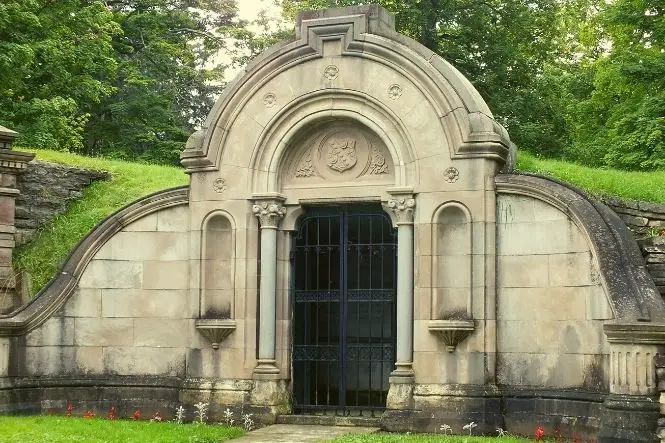interment is a word referring to the final resting place of a deceased person’s remains. Traditionally designating a burial spot, interment can now also include the location one’s ashes are scattered, for example.
Let’s go over the different types of interment so you understand what they entail.
Burial
Traditional
A traditional burial is the act of placing a casket into a grave and marking that location with a headstone. Normally, the deceased has been embalmed and viewed during a funeral prior to being transported to the interment site. The grave itself will have a liner or vault, designed to keep the earth intact and unmoving throughout the passage of time. This protects the body somewhat from the elements.
Crypt
A crypt is deeper than a traditional grave and is often much larger; entire families may be interred together in such a design if so desired. It allows for a drainage system to be installed that filters out the natural elements that would normally infiltrate the grave.
A marker designating the location of the crypt will be placed so family can come visit that site, but note that the crypt will be sealed off after the deceased has been interred.
Natural/green
Natural or green burials do not typically feature embalmed bodies. Instead, the goal is to allow decomposition to happen naturally. This also means the burial liner or vault is not included, as protecting the deceased from the elements is not desired.
Green burials allow for decomposition to occur naturally and the deceased can be buried in any container, whereas with a natural burial, the container is biodegradable and no chemicals are used at the gravesite (such as pesticides, for instance).
In a green burial, there are specific plots of cemetery land designated to serve as interment sites. Natural burials can sometimes be held on private properties, but this is subject to local rules and regulations that vary.
Mausoleum
The mausoleum is the only option of burial that is above, rather than below, the ground. They are the small buildings seen in cemeteries and house one or more caskets inside. Depending on the size of the mausoleum, a family can have multiple members housed together.
Rather than the individual headstones of traditional burial, a mausoleum will feature inscriptions and tributes to the deceased inside the building itself. Of course, having an entire building dedicated to interment of the deceased will be more expensive than traditional burials, but provides an indoor and somewhat private space for visitation of the remains.
Interment after Cremation
Burial
It is possible to bury an urn containing the ashes if desired. Some cemeteries even have designated spots to inter urns. Like the burials discussed above, these can include a protective lining or be done “green” without any lining; even the urn can be biodegradable.
Scattering
Probably the most commonly thought of example of what to do with ashes is scattering them in a place the deceased loved. Be sure to check with local rules and regulations prior to doing so, however, to avoid violating any codes.
Another option is a scattering garden, which is usually attached to a traditional cemetery and permits ashes to be scattered. Additionally, it is usually allowable to place some sort of physical marker there to mark the location (not unlike a headstone).
Columbarium
A columbarium is a communal set of a small, attached compartments to store urns. While it is communal, families are permitted to include information about the deceased on their compartment, with the same information often found on headstones, like name, dates of birth and death, and epitaphs. Furthermore, adjacent compartments can be purchased together, allowing urns of relatives to be placed next to each other.
Personal Choice
Overall, the method chosen is a personal choice, often influenced by culture and religious custom, as well. It might be a choice the deceased made in a will, or one made by relatives after the fact.
For example, a traditional burial is usually preceded by a funeral ceremony, often held at a church. Nothing mandates that this be the case, however. Some people choose to forgo a funeral altogether, while others decide to have more lively celebrations of life.
Furthermore, if someone is cremated, this does not mean that a funeral cannot be held. Although funerals normally involve a viewing of the body, this is not always so, and many other aspects of a funeral can be carried out as always.
The choice is also often influenced by the cost, with cremation generally being a much cheaper option than burial, which will require a casket, possible embalming, burial vaults or liners, etc.
As can be seen, there are many options for interment, and the word no longer solely refers to burial, including alternative forms of choosing a final resting place, as well.


